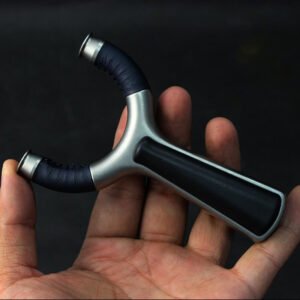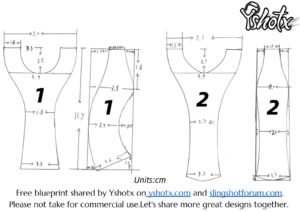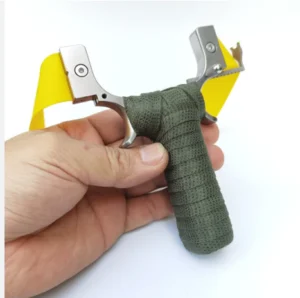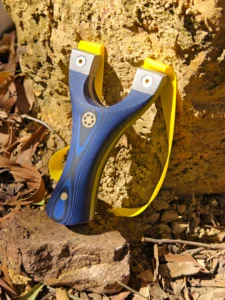Whether you’re stepping into the world of slingshot hunting, aiming for tighter target shooting groups, or crafting your next DIY slingshot, understanding the differences between Y-shaped, TTF (Through‐The‐Fork), and OTT (Over‐The‐Top) designs is essential. Each configuration offers unique advantages in terms of accuracy, power, and comfort. This in-depth guide will equip you with expert knowledge to choose—or build—the ideal slingshot that fits your style and performance goals.
🔍 Why Slingshot Type Matters
“Picking the right slingshot style isn’t just about looks—it directly impacts shot consistency, band lifespan, and that exhilarating feeling when your round hits dead center.”
Performance & Precision: Different fork styles affect how bands stretch and release, altering trajectory and initial velocity.
Customization & Comfort: Grip ergonomics and band mounting angle vary dramatically, influencing your shooting technique and long‐term practice comfort.
Skill Level & Use Case: Beginners often favor one style for ease of use, while seasoned marksmen chase lower round‐to‐round spread using specialized configurations.
🔧 1. Y-Shaped Slingshots: The Timeless Classic
1.1 What Is a Y-Shaped Slingshot?
A Y-shaped slingshot features two tines (forks) forming a clear “Y” above the handle. This traditional design is arguably the most recognizable—think of the wooden frames many of us remember from childhood.
Construction: Typically carved from hardwood (like maple or ash) or molded from metal/alloy into a symmetrical “Y.”
Band Mounting: Bands attach to each tine via holes or notches—straightforward and low cost.
1.2 Performance Profile
Accuracy: Offers a consistent band pull due to the even spacing of the tines, which helps beginners achieve more predictable shots.
Power: Band angle is relatively shallow, limiting maximum stretch length (draw). Consequently, band tension is moderate, yielding sufficient—but not extreme—muzzle velocity.
Ergonomics: Simplicity is its biggest draw. There’s minimal learning curve for aiming, making it ideal for newcomers and casual recreational shooting.
1.3 Ideal Use Cases & Emotional Value
Backyard Plinking: The Y-shaped frame’s forgiving nature builds confidence—you’ll feel joy nailing tin cans even on your first outing.
DIY Friendly: Carving a classic Y-frame from a sturdy branch connects you to a sense of craftsmanship and nostalgia.
Budget Builds: If you crave a quick, low‐cost path to slingshot fun, a Y‐shaped is unbeatable.
🔗 2. TTF (Through‐The‐Fork) Slingshots: Precision Meets Power
2.1 What Does TTF Mean?
TTF stands for “Through‐The‐Fork,” meaning the band is threaded through a hole drilled in each tine before peeking out to attach to the pouch. This configuration alters band angle drastically compared to a Y‐shaped setup.
Construction: Tines often feature machined holes or eyelets. Frames are usually made from robust materials—aircraft‐grade aluminum, stainless steel, or reinforced polymers.
Band Path: Bands emerge more in line with the handle, creating a steeper draw angle.
2.2 Performance Profile
Accuracy: The direct band path reduces “side‐rub” on tines, promoting a straighter pull and minimal wobble at full draw. Expect tighter groupings once you dial in your form.
Power: Because the band lies more underneath the fork, you gain additional draw length for a more forceful release. Higher feet per second (FPS) becomes achievable with quality bands.
Ergonomics: The steeper angle often translates to a more “natural” draw—feels like pulling a bow. Beginners may need time to adjust, but intermediate and expert shooters relish the improved feedback.
2.3 Ideal Use Cases & Emotional Value
Competitive Target Shooting: When every millimeter matters, TTF’s consistency breeds confidence. You’ll adore the moment your tighter clusters scream progress.
Hunting Scenarios: A snappy, powerful shot helps you humanely harvest small game; you’ll appreciate the controlled tension as you draw back on that cold morning.
Precision Builds: Crafting a TTF frame connects you with engineering precision, sparking that proud “I made something that actually works” feeling.
🔗 3. OTT (Over‐The‐Top) Slingshots: Speed & Snap
3.1 Understanding OTT
OTT, or “Over‐The‐Top,” refers to mounting the band so it loops over the top of each tine rather than through a hole. This simple tweak drastically changes the band’s resting angle.
Construction: Tines may be slightly thicker or angled outward to accommodate band wrap; frames can be wood, metal, or composite.
Band Path: Bands sit higher but lean forward at full draw, creating a distinct “snap” on release.
3.2 Performance Profile
Accuracy: OTT is sometimes deemed less precise than TTF because the band can rub against the fork at release. However, skilled marksmen can overcome this with consistent form.
Power & Speed: Excellent choice for high‐FPS hunting due to the band’s aggressive draw path. You’ll feel that adrenaline rush as the pouch violently snaps forward.
Ergonomics: Slightly steeper learning curve; you must fine‐tune your anchor point to compensate for band placement. Yet once mastered, the OTT offers a satisfyingly clean, high‐velocity shot.
🎯 4. Comparing Y-Shaped, TTF & OTT Side by Side
Choosing the right type of slingshot can significantly affect your shooting performance. Here’s a clear breakdown of the three most common styles: Y-Shaped, TTF (Through-the-Fork), and OTT (Over-the-Top).
🪵 Y-Shaped Slingshot
This is the most traditional and recognizable form. With its symmetrical fork and balanced grip, it’s ideal for beginners and casual users. The open design provides a wide aiming window, making it perfect for instinctive shooting and outdoor plinking.
Best for: Beginners, classic design lovers, all-purpose use🎯 TTF (Through-the-Fork) Slingshot
In a TTF setup, the band is attached through the front of the fork tips. This configuration reduces torque, provides a straight pull, and offers excellent accuracy. It’s favored by competitive shooters who want precision and consistency.
Best for: Target shooting, precision accuracy🔥 OTT (Over-the-Top) Slingshot
OTT slingshots allow the band to travel over the fork tips. This design increases power and shooting speed, making it ideal for hunting or fast-paced shooting. The higher anchor point delivers strong energy transfer with every shot.
Best for: Hunting, speed shooting, high-power performance
🛠 5. How to Choose Your Ideal Slingshot Type
Assess Your Skill Level:
Beginner? A Y-Shaped slingshot helps you build foundational form without frustration.
Intermediate/Advanced? Lean toward TTF or OTT to unlock more power and tighter groupings.
Define Your Purpose:
Recreational Plinking? Y-shaped’s simplicity equals quick fun.
Hunting/High‐Velocity Shooting? OTT’s snap or TTF’s precise pull get the job done humanely and efficiently.
Consider DIY vs. Prebuilt:
DIY Enthusiast? Y‐shaped is the easiest to carve; TTF demands precise drilling; OTT favors creative fork shapes.
Ready‐Made? Brands like SimpleShot, Scout XT, and Hammer XT offer TTF/OTT models straight out of the box.
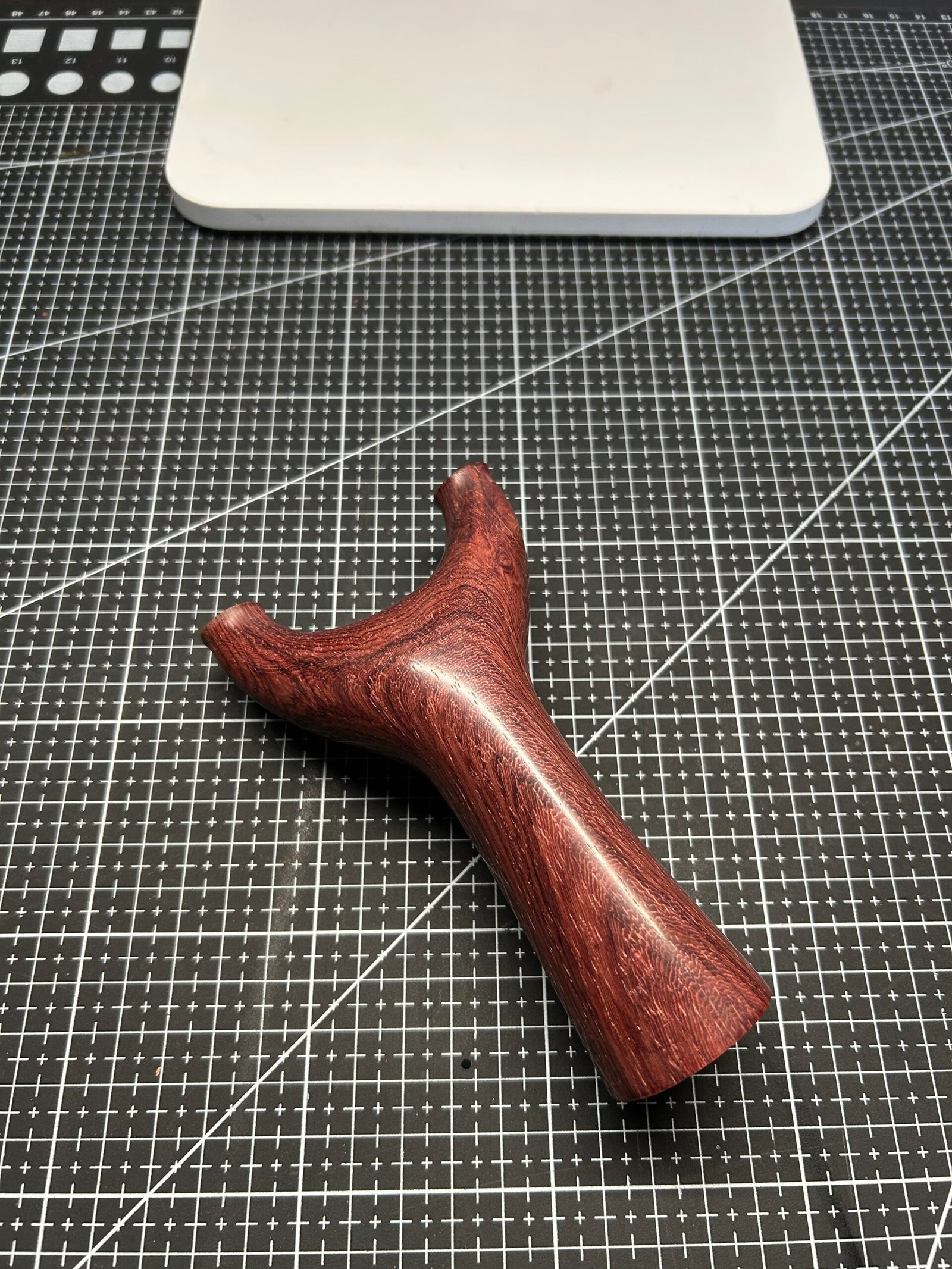

🎉 6. Emotional Impact: Why You’ll Love Mastering Each Style
Y-Shaped: Rekindle childhood wonder and experience the satisfying simplicity that ignites pure, carefree fun.
TTF: Feel the rush of wielding a precision tool—your rounds will fall so close together they’ll amaze your friends.
OTT: Embrace the thrill of instant velocity—every shot feels like a powerful statement of skill and confidence.
🧠 7. Conclusion: Elevate Your Slingshot Game
Choosing between Y-shaped, TTF, and OTT slingshots isn’t just a matter of personal preference—it’s about aligning your gear with your goals: whether that’s nailing perfect bull’s‐eyes, harvesting small game cleanly, or simply unleashing your inner marksman for pure adrenaline. Each style offers a distinct personality:
Y-Shaped = Approachable Nostalgia
TTF = Precision Engineering
OTT = Raw Power & Speed
Harness this knowledge to customize or select your next slingshot. Once you find your perfect match, you’ll not only shoot better—you’ll feel a deeper connection to the craft and community that make slingshoting so endlessly rewarding.
更改此文本。

